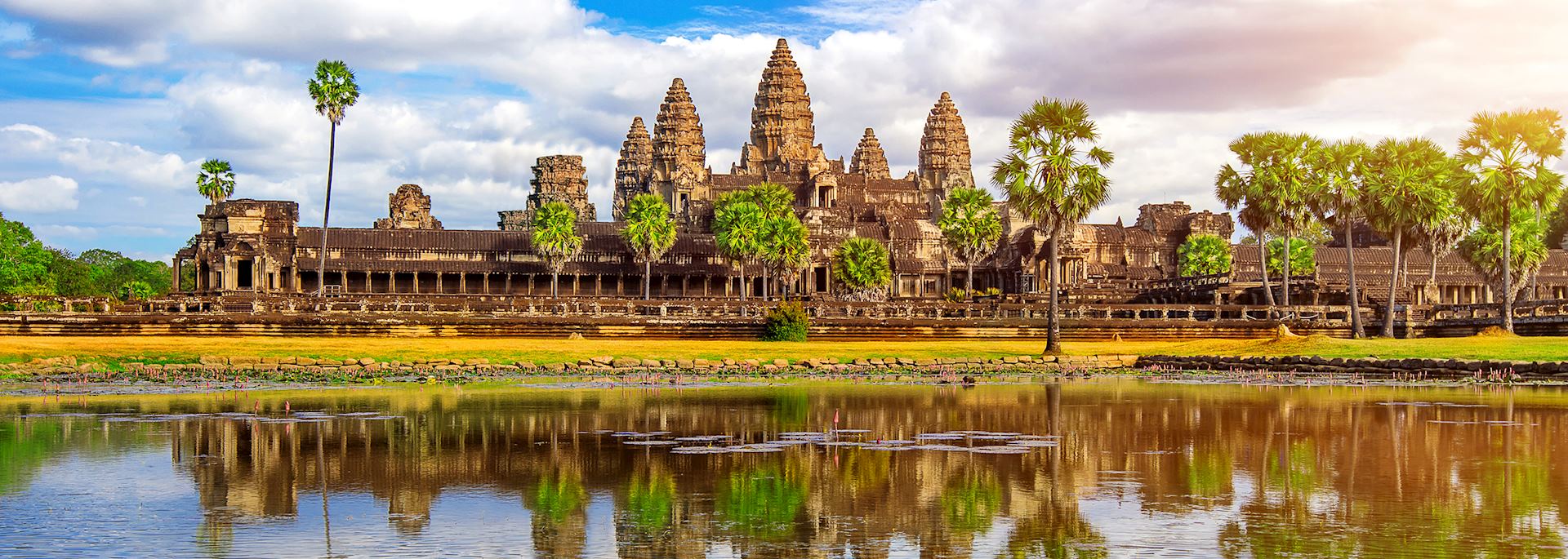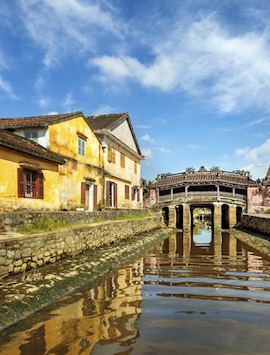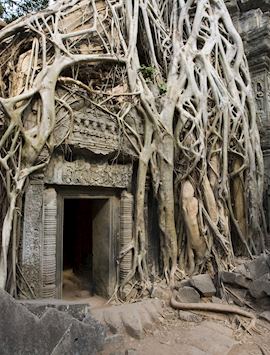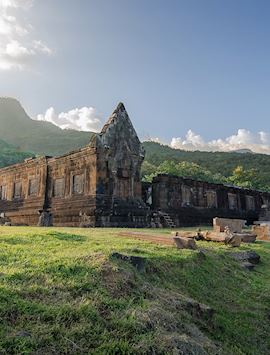By Southeast Asia specialist Mark
UNESCO describes its World Heritage Sites as ‘irreplaceable sources of life and inspiration’. And, during my travels in Southeast Asia, I’ve certainly been awe-struck as I’ve explored 900-year-old temples, vast protected forests, and history-steeped towns like Hoi An still bustling with life.
Along the mainland, many of Southeast Asia’s UNESCO World Heritage Sites are clustered densely enough that you can just about journey through them in one mammoth trip. But for a less hurried adventure, I recommend focusing in on a handful of sites that feed into your passions — whether you’re a budding archaeologist, a nature lover, or a history enthusiast.
Below are the sites that have captivated me and my clients the most. I’ve clustered them by country, so if you want to focus your visit on just one destination there’s plenty to take in. However, combining countries in pairs is very doable and reveals how their histories and cultures have tangled and diverged through the ages.
Vietnam’s top UNESCO World Heritage Sites
In Vietnam, you’ll find rainforest-covered uninhabited islands, complex cave networks, and sacred structures built for former royalty. I suggest a coastal route from Hanoi in the north down to Hoi An in Central Vietnam, along which lie the country’s top UNESCO sites.
Halong Bay
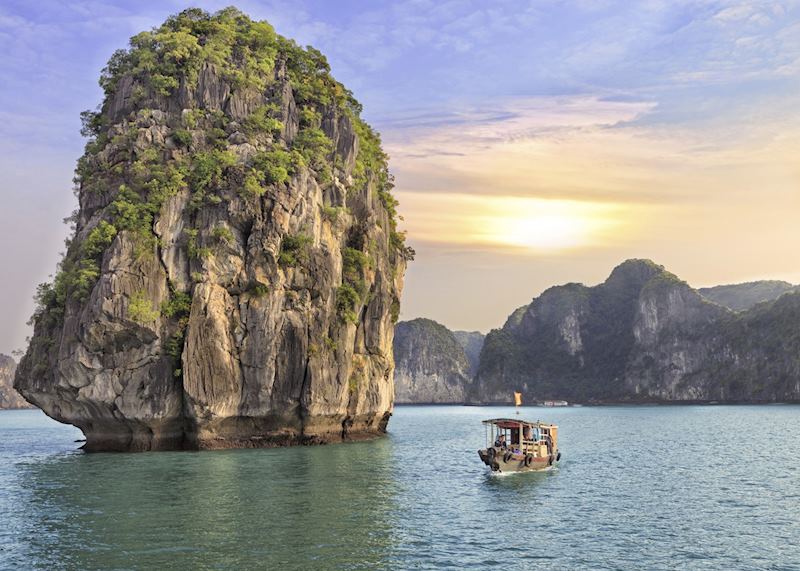
With over 1,500 craggy pillars jutting out of the South China Sea, Halong Bay is otherworldly. You can weave around these drowned karst islands by junk, a modern take on the traditional Chinese sailing boats introduced to Vietnam 700 years ago. During your cruise, you can soak in the sunrise with morning T'ai chi on deck and then kayak through the area’s smaller bays and eroded caves.
While I encourage everyone to visit Halong Bay on a trip to Vietnam, there’s no getting around its busyness. So, to get away from the crowds, I can also arrange a trip to the more tranquil Bai Tu Long Bay where you can spend a peaceful evening casting your net with the local fishing community.
Phong Nha-Ke Bang National Park
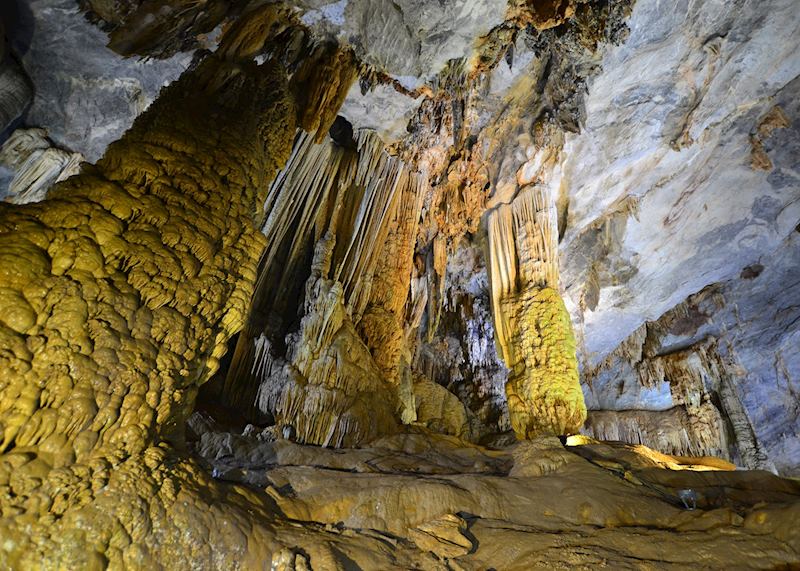
Rainforest-carpeted valleys, lush rice paddies, and some of the world’s largest caves are located in Phong Kha-Ke Bang National Park. Its rich ecosystem provides shelter for an abundance of biodiversity, such that scientists are still finding undiscovered species in its elaborate cave systems.
Within these caverns, your guide will tell you about the lofty stalagmites and stalactites that shimmer as the light hits them and the 300 million-year-old fossils embedded in the walls. On a multi-day hike, you can even camp on the sand of an underground beach, taking a dip in its turquoise waters lit by slivers of light from an opening in the rock.
Above ground, you can cycle, hike, and kayak your way through the forested park. While the wildlife here is good at hiding, you may spot clouds of inky blue butterflies fluttering overhead in May and June.
Just note, you can only visit the park from March to late August due to flooding in the rainy season.
Hue’s monuments
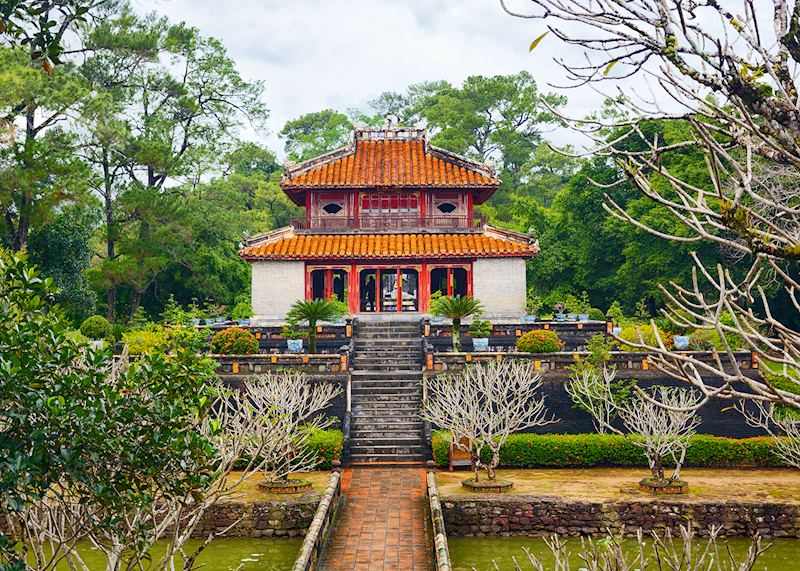
The former seat of the Nguyen Dynasty emperors, Hue’s 19th-century walled Imperial City contains opulent royal residences, vibrant mosaiced roofs, and multi-tiered temples encircled by a moat. These structures still show marks from gunshots and artillery fire from the Vietnam War, but are slowly being restored. During your visit, I also suggest you visit Emperor Minh Mang’s mausoleum, nestled in immaculately landscaped gardens that, from above, take the shape of the ruler’s resting body.
You can complement a tour of the monuments by sampling some of Hue’s distinct cuisine, which harks back to its royal past. With an innovative blend of ingredients and thoughtfully chosen presentation, these dishes were originally developed for the ever-curious tastes of the Imperial court. One of the best places to try these aromatic dishes is in the home of local culinary artisan Nhu Huy, which I can arrange for you.
Hoi An Ancient Town

The old town of Hoi An is a well preserved 15th–19th century trading port with long straights of glassy canals. Here, the gridded-street buildings bring together a fusion of cultures, including Chinese, Japanese, Dutch, and French influences — a result of both colonialism and thriving trade.
Many of the streets are completely car-free, making the city ideal for a walking tour around its distinct hubs. The Chinese quarter in the east, with its bold red and green assembly hall entrances, is connected to the Japanese quarter in the west by the embellished reddish-pink Chua Cau Temple Bridget (‘Japanese Bridge’).
Following your tour, I recommend heading to one of the town’s 600 or so tailor shops. Don’t worry, I can tell you which are the best. Once there, they take your measurements, help you choose a quality fabric, and expertly craft an outfit in just a few hours. While you wait, you can sample local dishes like cao lau (noodles topped with bean sprouts and pork) from the lantern-adorned markets.
My Son ruins
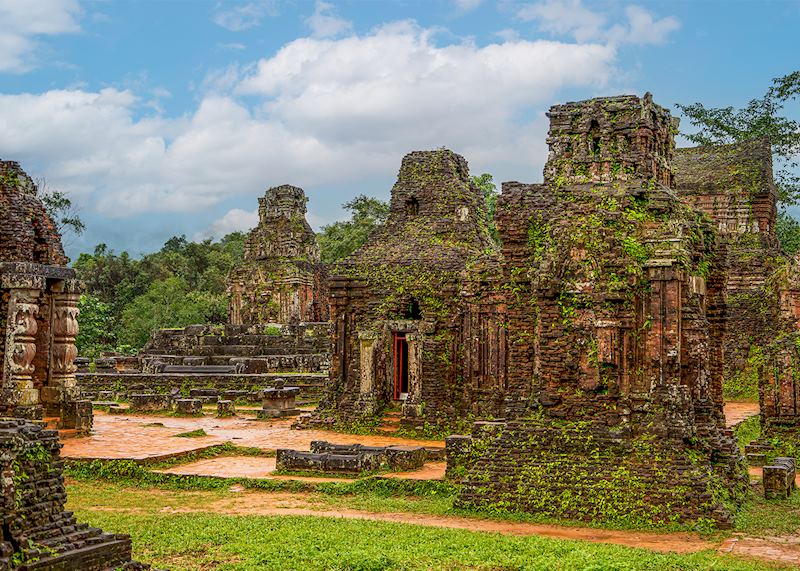
Set amid verdant eucalyptus groves, My Son Sanctuary was once the religious and political capital of the Champa Kingdom, which grew steadily from the 4th to 13th century. The fired-brick tower temples at My Son are predominantly dedicated to Hindu deities, and their sandstone-etched iconography delicately depicts scenes from the religion’s mythology. The site does become a sun trap during the day, so your private guide will take you to see the ruins at dawn when it’s cooler and more tranquil.
However, the My Son ruins aren’t the most ornate temples you’ll see during a trip to Southeast Asia’s UNESCO World Heritage Sites. This is because they were used as a military base and heavily bombed during the Vietnam War. So, I suggest visiting them before heading to Cambodia, building up to the more extravagant Khmer temple complex of Angkor Wat.
Cambodia’s top UNESCO World Heritage Sites
In Cambodia’s vibrant town of Siem Reap, there’s an abundance of boutique hotels and restaurants to enjoy before stepping into its temple-filled tangled jungles. I like combining a trip to these ruins with a cruise along the Mekong from Vietnam, where you’ll get to witness rural life along the river.
The temples of Angkor

For me, exploring the intricately sculpted temples of Angkor should be on everyone’s list when planning a UNESCO-focused trip to Southeast Asia. This vast complex showcases Khmer art through the centuries with its narrative bas-reliefs, leaf-patterned colonnettes, and corbelled arches. The focal point, Angkor Wat, is said to be the largest religious monument in the world.
To explore these expansive ruins, I can pair you with an expert guide for a cycling tour that hones in on the best bits. You’ll ride atop thick temple walls for a unique vantage point and take a side entrance into the root-speared temple of Ta Prohm before it’s open to the public. Inside, your guide will show you the trick to creating a reverberating echo in a chamber where your voice alone won’t bounce off the walls.
Temple of Preah Vihear
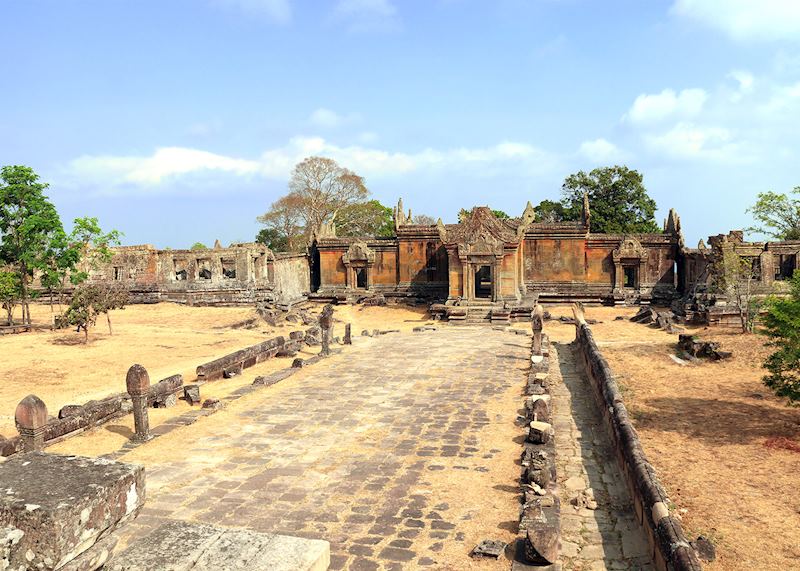
Four hours north of Angkor is Preah Vihear, a Khmer temple perched on a remote 500 m (1,640 ft) rocky outcrop in the Dangrek Mountains, grazing the Thai border. In fact, this holy place is so close to the boundary that it was politically disputed for years before the International Court of Justice ruled the temple and its surrounding land to be in Cambodia.
Preah Vihear, dedicated to Hindu deity Shiva, was built along a north–south axis rather than the typical easterly orientation of other Khmer temples. Starting in the north, you’ll climb the 163-stepped staircase and pass by five ornate gopuras (entrance towers) to reach the central sandstone sanctuary looking out across the flourishing plain of Thailand and Cambodia below. Alternatively, you can admire the complex from above on a helicopter ride across Angkor and the surrounding temples.
Laos’s top UNESCO World Heritage Sites
Laos is a lesser-visited destination in Southeast Asia but still holds many wonders, from the mystery-shrouded Plain of Jars to temples nestled within jungle-clad hillsides. From the country’s capital Vientiane, you can hop on a short flight to Pakse and Luang Prabang to see two of the main UNESCO sites, but my final recommendation is a little more out of the way.
Wat Phou temple complex
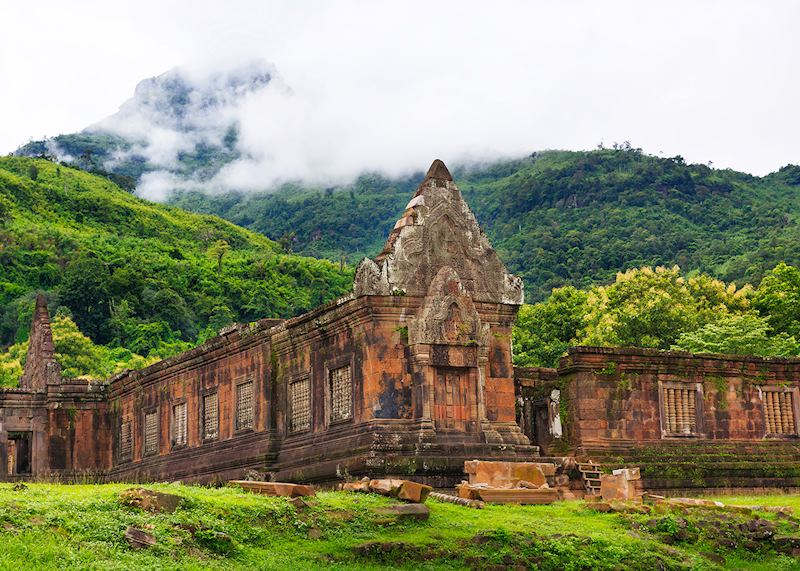
While not as elaborate as the temples of Angkor, Wat Phou’s laid-back riverside jungle location in the province of Champasak makes this Hindu temple complex well worth a visit. This is especially true if you combine your trip with a cruise along remote stretches of the Mekong on a converted rice barge.
Considered to be one of the oldest worship sites in Southeast Asia and allegedly the ‘blueprint’ for Angkor Wat, these pre-Angkorian Khmer ruins are nestled among rice fields on a hillside at the base of the forested Phou Kao Mountain. As you climb to the upper levels of the complex you’ll be treated to panoramic views of the Mekong and plains below. The walk up can be heartbeat-raising but this simply makes it all the more refreshing when you finally splash your face with cool water from the sacred spring at the top.
The town of Luang Prabang
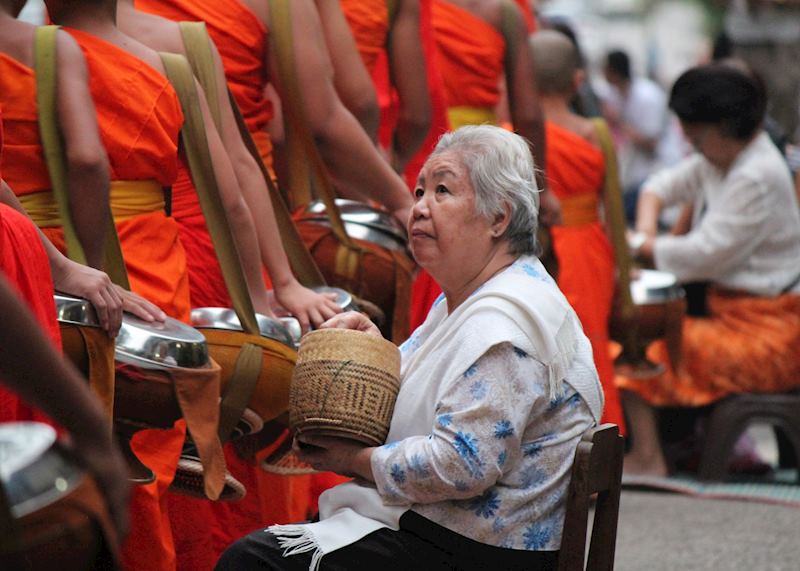
Wooden houses propped up by stilts, saffron-robed monks strolling around glittering temples, and rugged mountainous greenery — the town of Luang Prabang captures the essence of Laos. It cradles unspoilt architecture that effortlessly blends the city’s tapestry of historical events and a rich culture that spans back over more than a thousand years.
To immerse yourself in it, I suggest getting up at dawn to watch the daily alms giving, where lines of townspeople donate rice and vegetables to Buddhist monks as they walk through the town. Then, I can arrange a short language class at a cafe on the banks of the Mekong River where you’ll learn some essential Lao words and sip locally produced coffee before exploring the town by foot or bicycle.
Plain of Jars
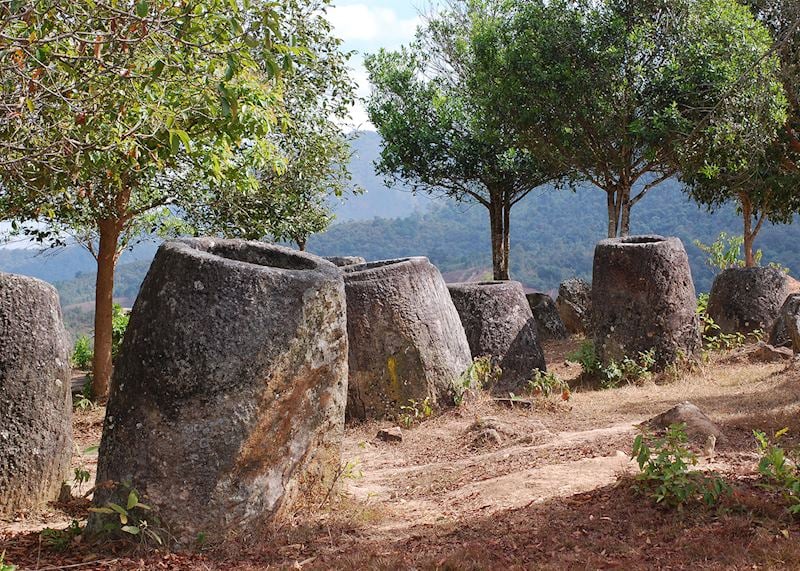
One of Laos’ greatest mysteries is its barren megalithic landscape known as the Plain of Jars. There lie hundreds or even thousands (the exact number is unconfirmed) of giant stone jars strewn across the Xieng Khouang Plateau, abandoned long ago by persons unknown — their origins are still debated by archaeologists.
As you wander around these mostly undecorated stones — some of which are so large they’ll tower over you — your guide will offer various theories: maybe they were funerary grounds, tools for collecting rainwater, or perhaps even beer mugs for a local race of giants. The truth? You will likely never know.
However, the Plain of Jars is for the truly intrepid. It’s either a long drive or flight from the capital, Vientiane, and once you arrive, you’re limited to exploring a couple of specific viewing sites — the rest of the landscape is still littered with unexploded ordinance from the Vietnam War. I would say though, that there’s something very special about being one of the few visitors to make it there.
Thailand’s top UNESCO World Heritage Sites
Thailand’s UNESCO sites offer intricately designed temples and meticulously preserved wilderness, after which I suggest relaxing on the secluded beach resorts of Southern Thailand. Or if you want more adventure, Bangkok has good connections to many of Thailand’s top UNESCO sites, so you can easily add on a trip to one of its bordering countries, too.
Ayutthaya
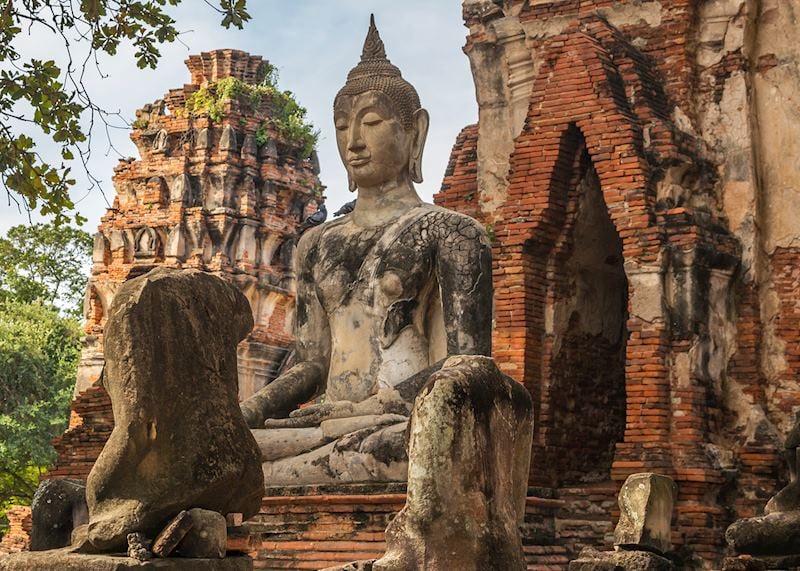
In the 17th century, Ayutthaya was the largest city in the world, and its richly carved prangs (reliquary towers) and monasteries give you a glimpse into the significance of this former capital. Partially destroyed by the Burmese army in 1767, the population was forced into captivity, while the city’s bricks were transported to build a new capital in Bangkok.
Some of the former temples have been reduced to piles of bricks, while others still stand proud like the spire-topped Wat Yai Chai Mongkhon. Despite this, the archaeological site is still frequented by worshippers who wrap saffron robes around the many Buddha statues and lay pink-hued lotus flowers on temple alters. I find the most rewarding way to navigate this sprawling site is to take a guided tour in a local ‘Kermit’ tuk-tuk with its distinctive frog-headed appearance. You’ll cover much more ground that way.
Sukhothai Historical Park
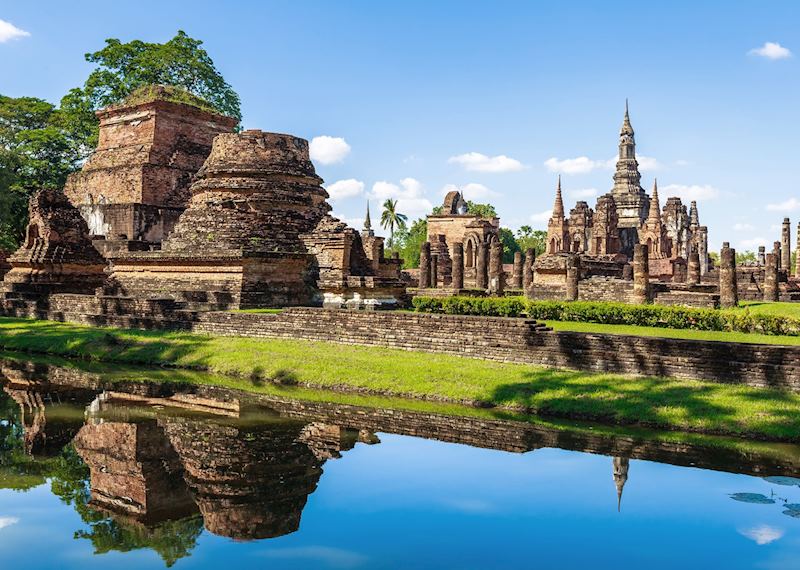
Another former capital of Thailand, Sukhothai is a little quieter than Ayutthaya as it’s further from Bangkok. The town’s history also stretches further back than Ayutthaya, becoming the capital of the first Kingdom of Siam in the 13th century. Here, you’ll encounter carved Buddhas cross-legged upon brick platforms and lotus-bud conical spires characteristic of the era’s architecture.
Exploring the lilypond-dotted area by bicycle allows you to visit more of Sukhothai’s ruins, which protrude from the undergrowth outside of the old city. Even at a leisurely pace, cycling around the ancient ruins can work up an appetite, so I recommend a trip to one of the town’s restaurants for a hands-on Sukhothai noodle-making experience.
Khao Yai National Park
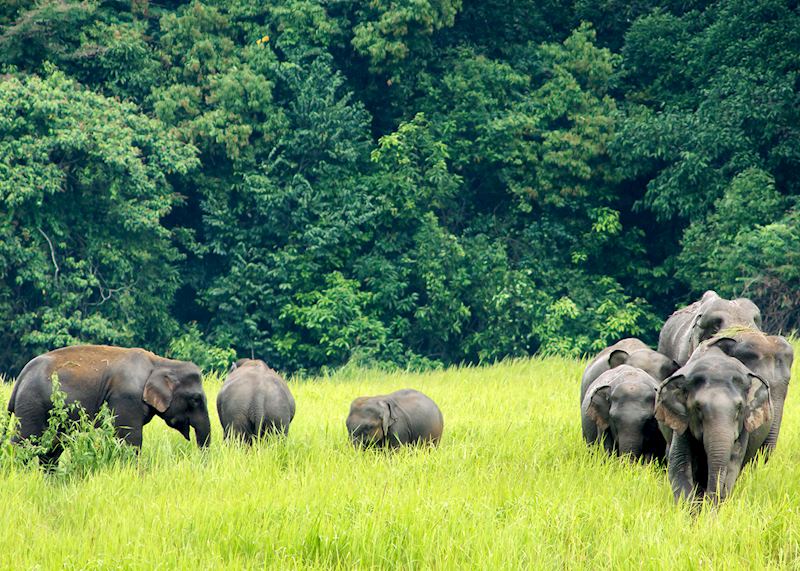
Khao Yai National Park is Thailand’s oldest national park, protected by UNESCO due to the forest’s critical role in the conservation of globally threatened and endangered animals. Inside dwell wild elephants, sambar deer, gibbons, macaques, hornbills, and hundreds of other species of fauna.
There’s an abundance of nature trails here, and as you climb further above sea level, the foliage shifts from dry evergreen forest into deciduous woodland into tropical rainforest. Ponds and waterfalls also scatter the route, providing a soothing soundtrack for your hikes. For the best chance of spotting the resident elephants, I recommend taking a 4x4 night safari from December to February where you might catch them resting upon grasslands, hanging out by the salt licks, or even stomping along the road beside you.
Read more about trips to Southeast Asia
Start thinking about your experience. These itineraries are simply suggestions for how you could enjoy some of the same experiences as our specialists. They're just for inspiration, because your trip will be created around your particular tastes.
View All Tours in Southeast Asia